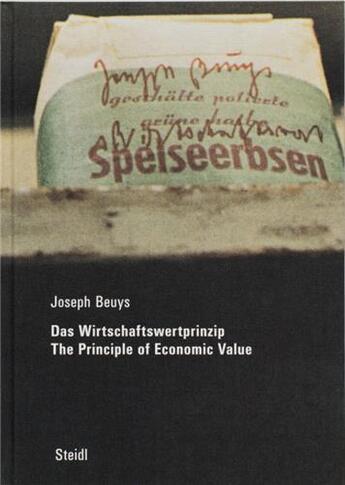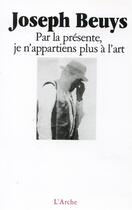-
Date de parution : 05/05/2022
-
Editeur :
Steidl
-
EAN : 9783958299146
-
Série :
(-)
-
Support :
Papier
Résumé:
On Beuys' sculptural indictment of economic value.
A sumptuous room in the Museum of Fine Arts in Ghent in 1980: on its wall hang Flemish Old Master paintings, gleaming in their gilt frames; yet in the middle of the room stand industrial metal shelves, sparsely stocked with packets of... Voir plus
On Beuys' sculptural indictment of economic value.
A sumptuous room in the Museum of Fine Arts in Ghent in 1980: on its wall hang Flemish Old Master paintings, gleaming in their gilt frames; yet in the middle of the room stand industrial metal shelves, sparsely stocked with packets of everyday perishable products: salt, flour, olives and peas. Each packet is signed by Joseph Beuys and labeled with "1 economic value." This was Beuys' compelling installation Wirtschaftswerte (Economic Values), a declaration that culture had once and for all been reduced to economic property. The products selected were notably from the German Democratic Republic, heightening disparities between West and East, capitalism and socialism, high and low culture, the mundane and the luxurious. Das Wirtschaftswertprinzip / The Principle of Economic Value documents the original installation, which Beuys later recreated elsewhere and expanded in a series of multiples. Originally published in 1990, the book has now been redesigned by Klaus Staeck and Gerhard Steidl.
Donner votre avis









